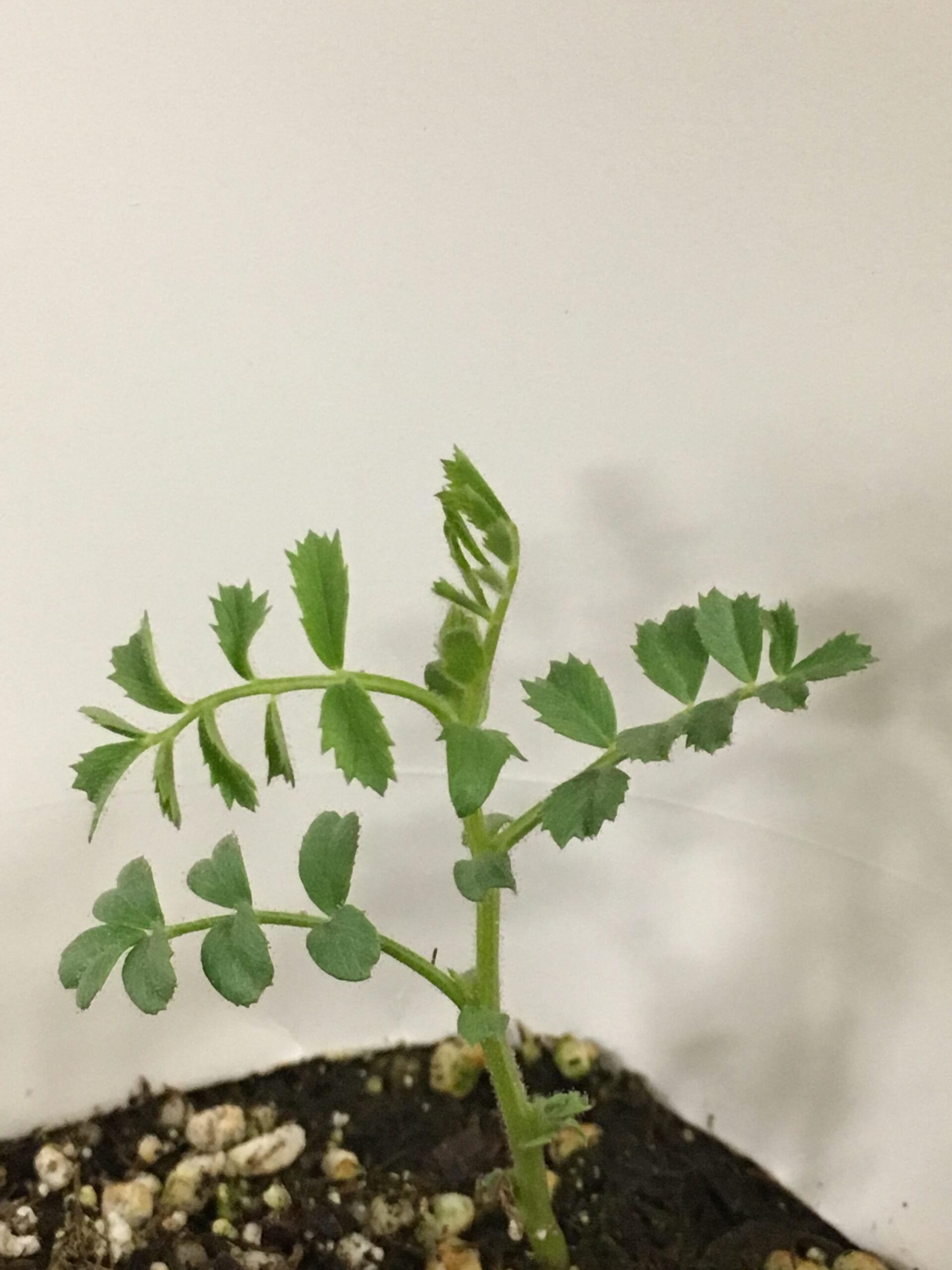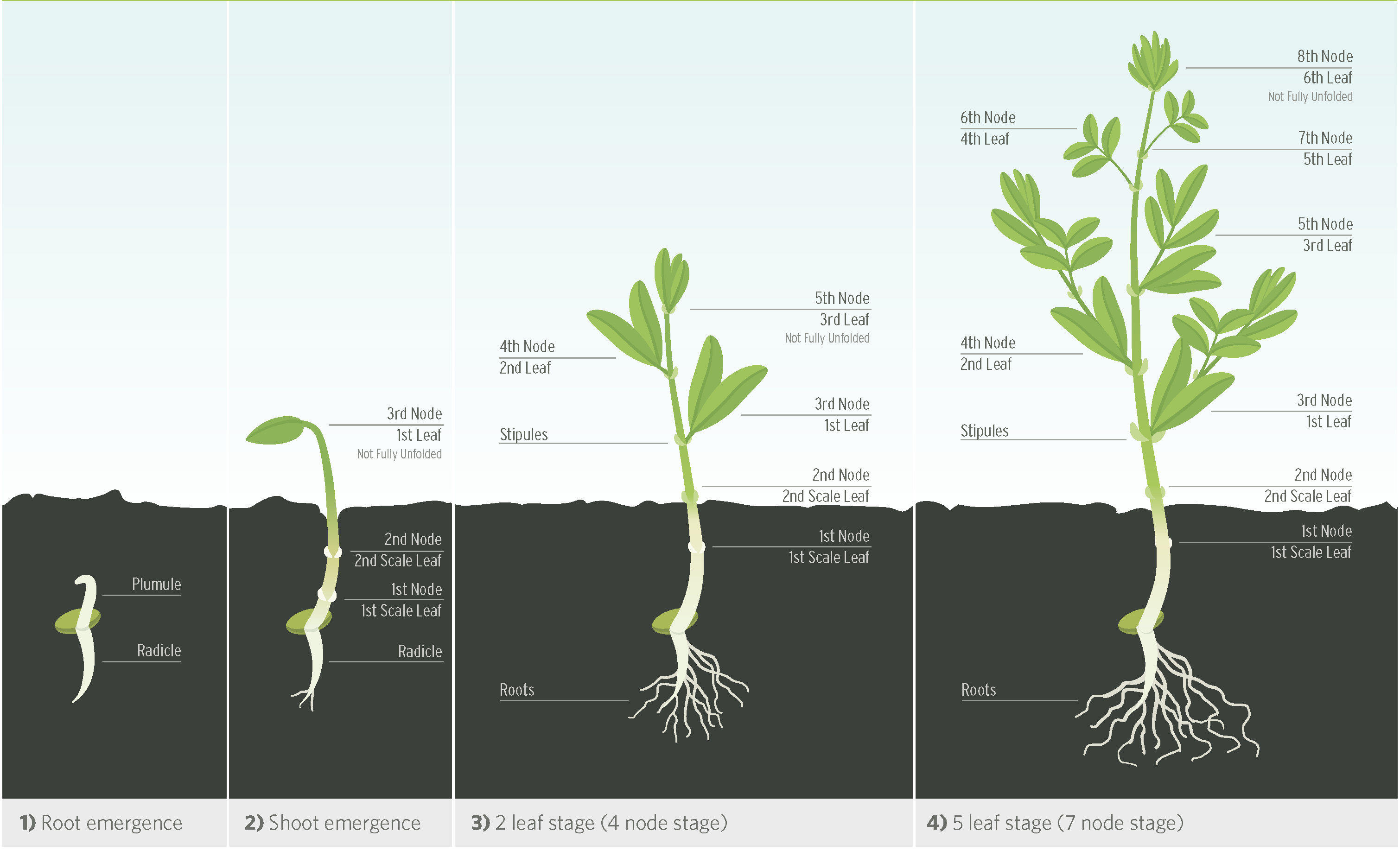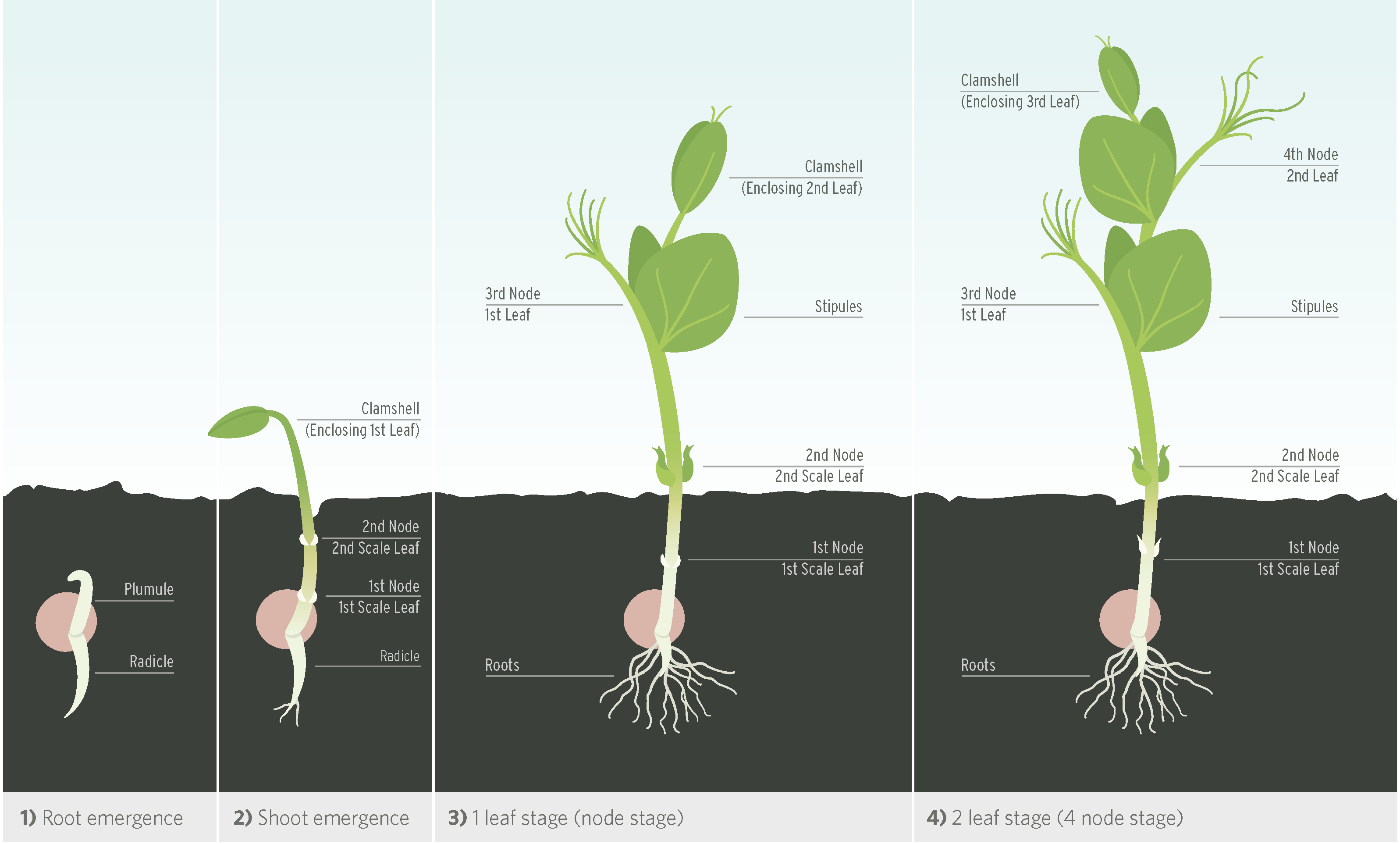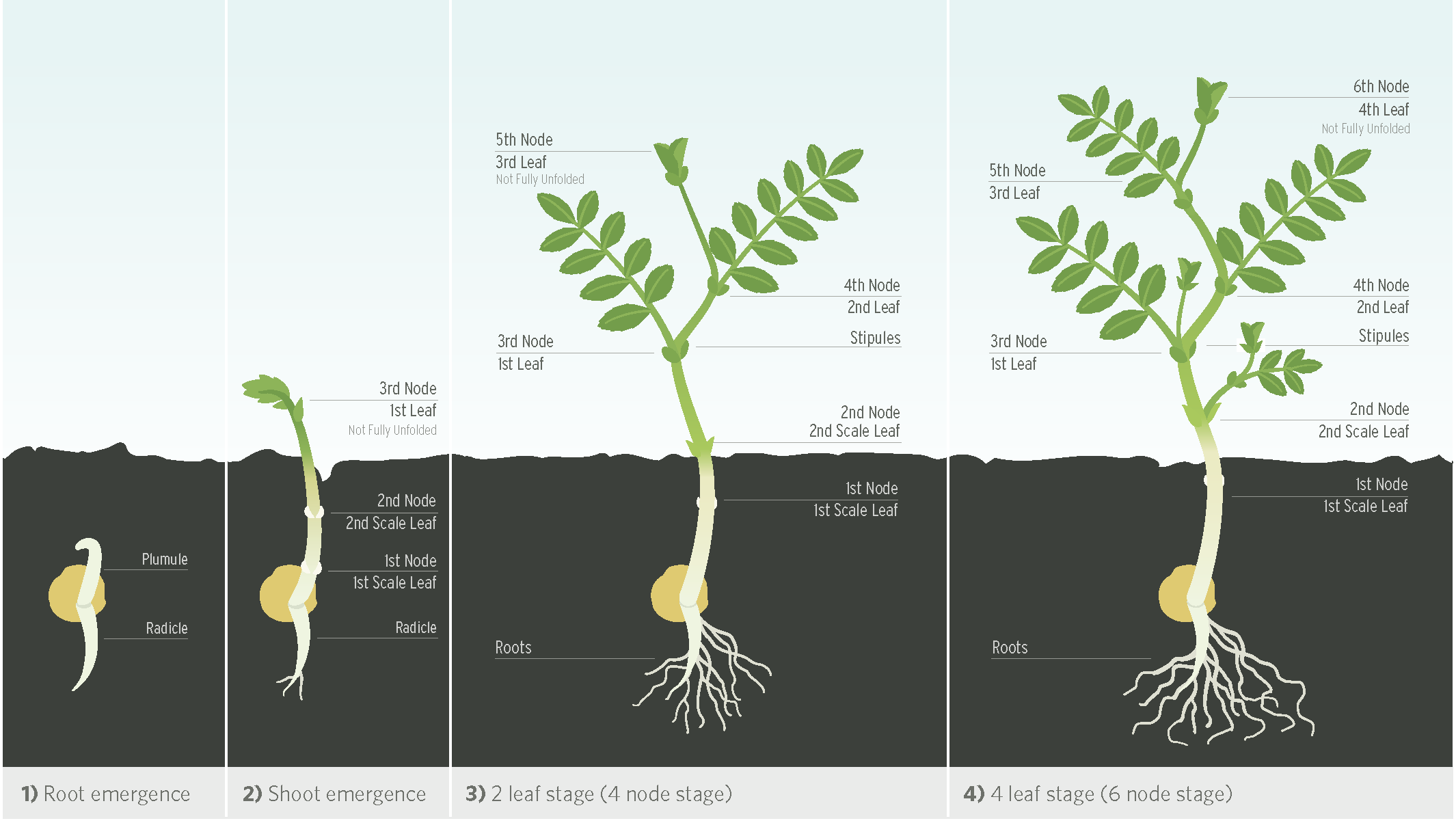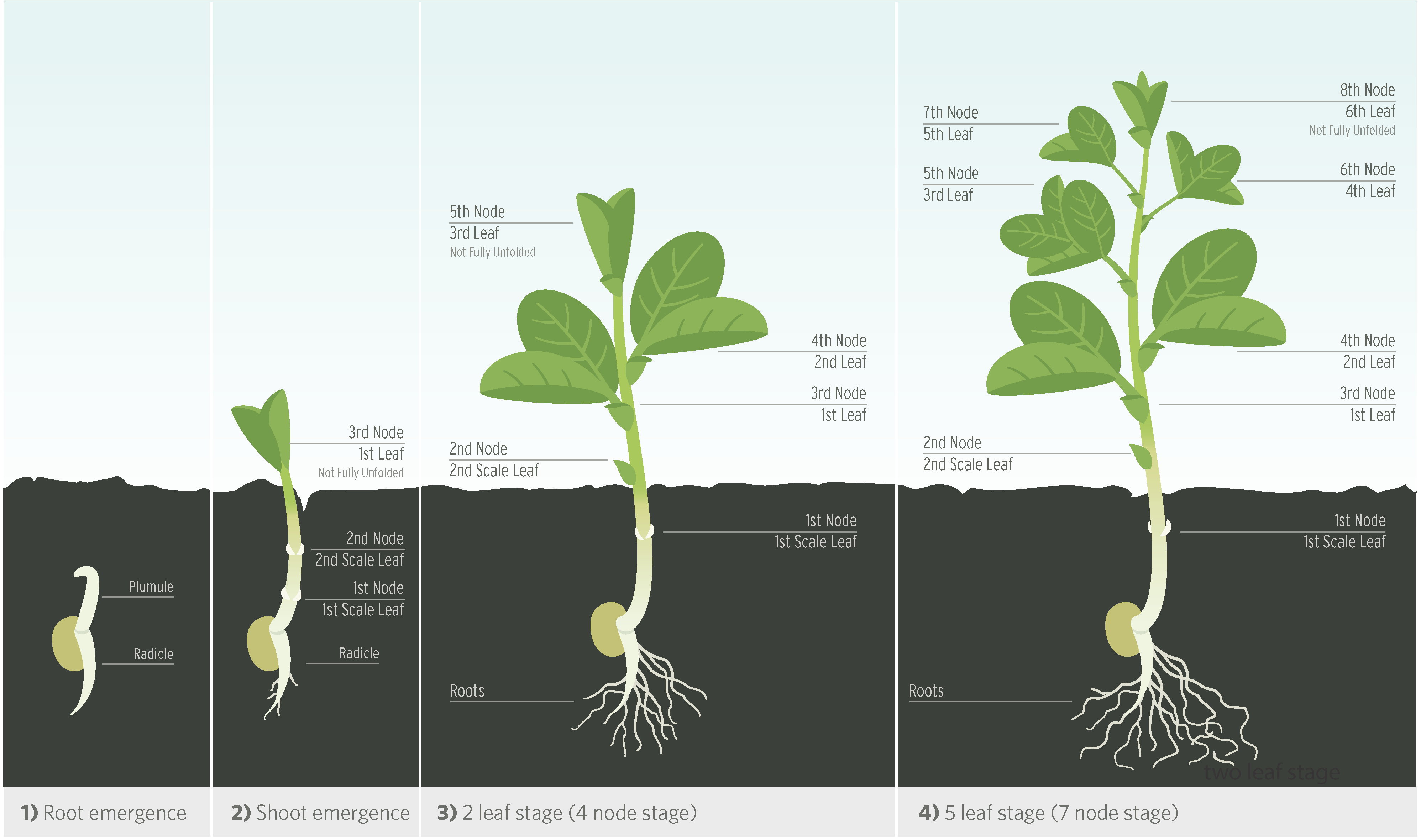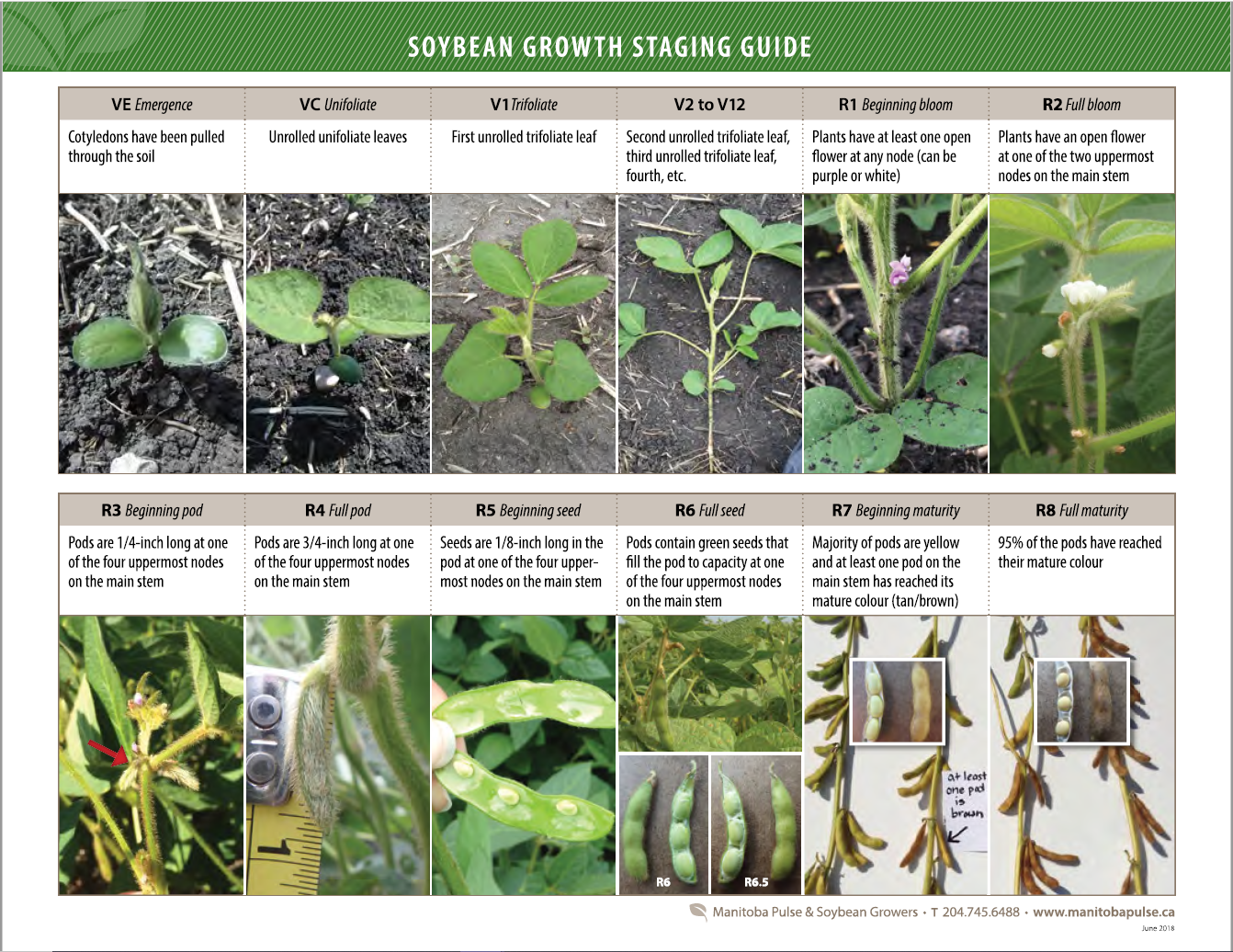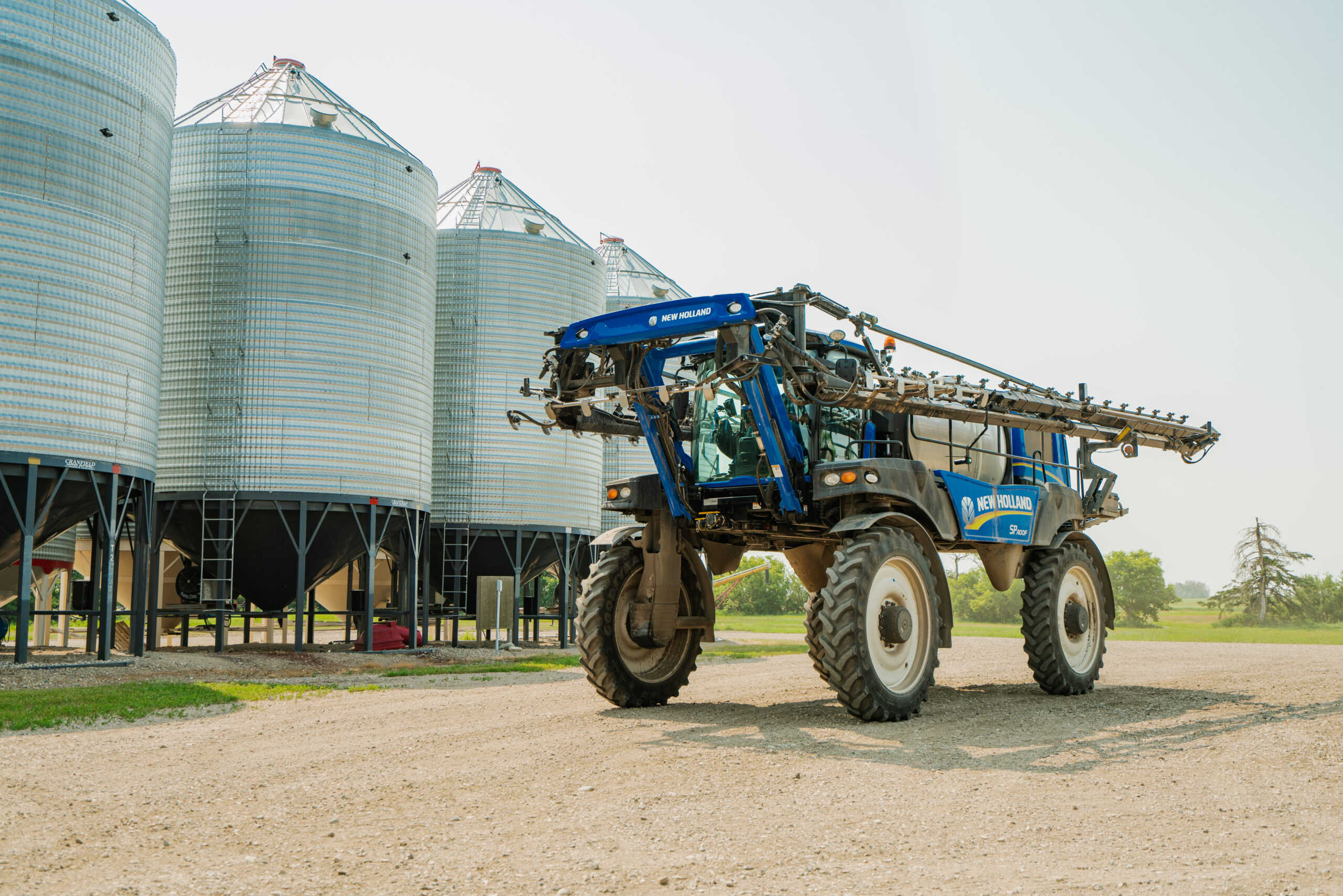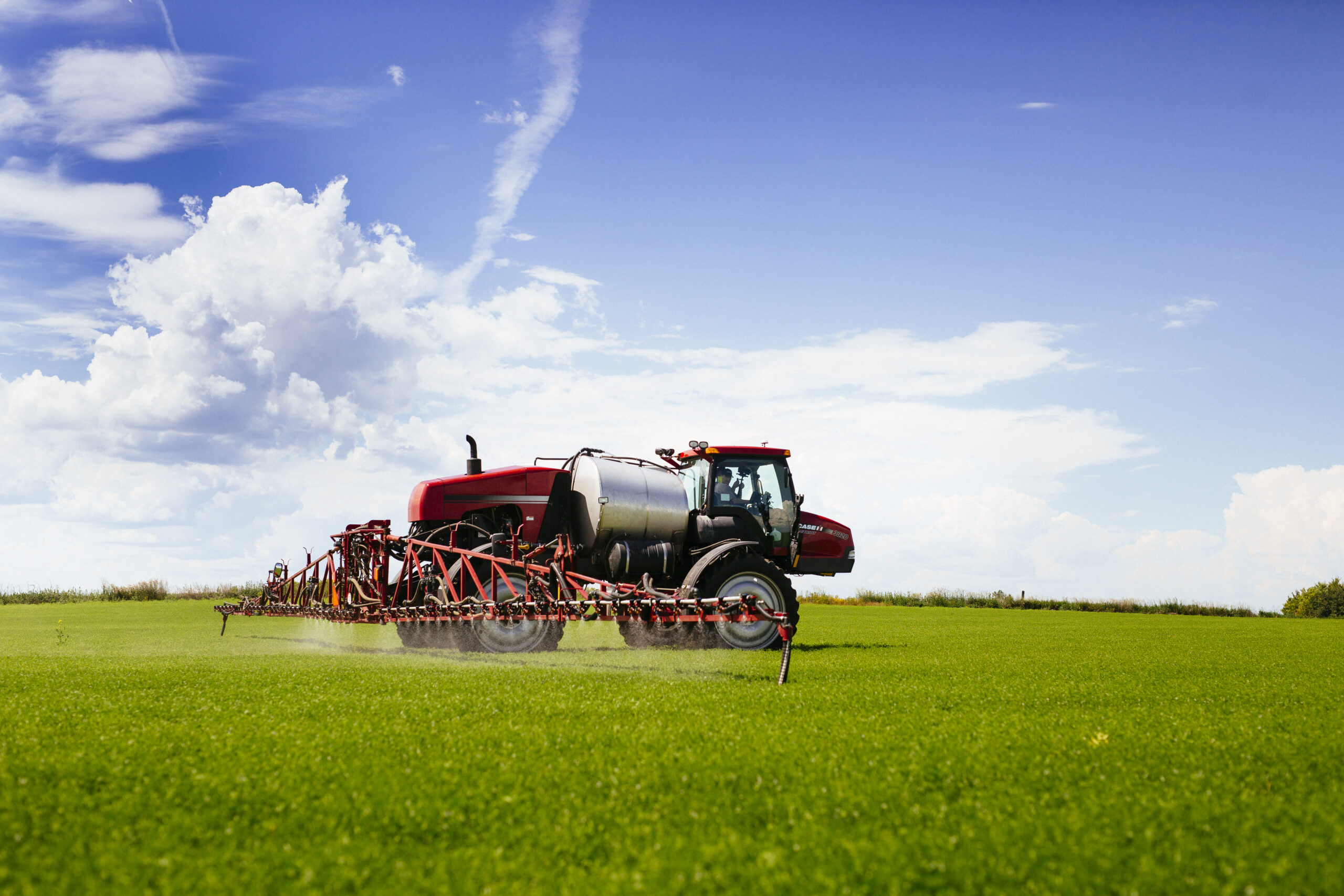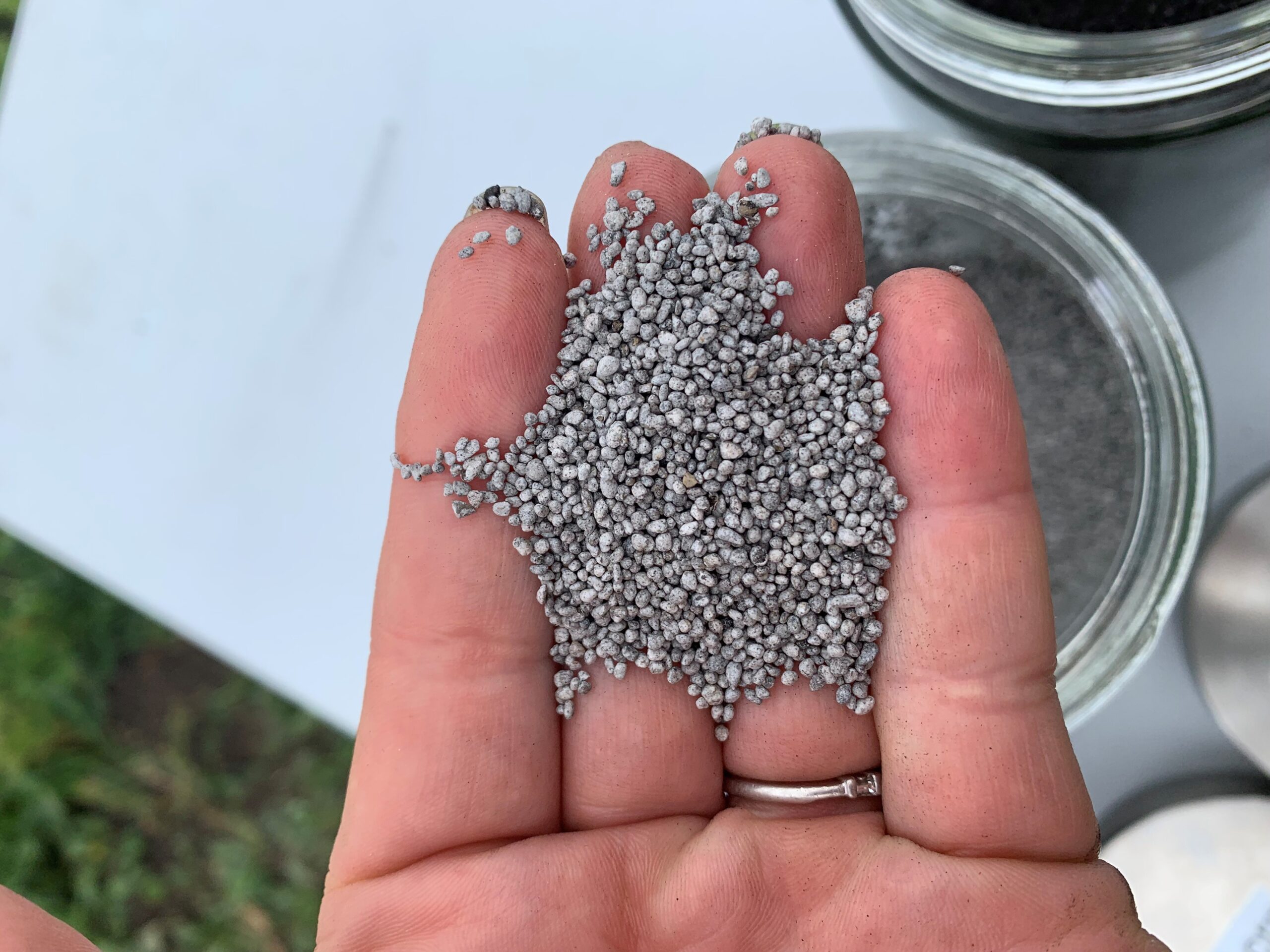Knowing how to stage a crop is important for proper timing of herbicide applications. When evaluating node stage the newest node or leaf should only be included in the count if the leaves are unfolded and flattened out. If the leaves are still folded then the associated node should not be included in the staging.
Peas, Lentils, Chickpeas, and Faba Beans
These four pulse crops undergo hypogeal germination in which the cotyledons and seed coat remain below the soil surface. The first two growing points or nodes do not produce true leaves but are called scale leaves which are relatively small, and they may or may not emerge completely from the ground. If the young seedling is injured by adverse conditions such as frost or mechanical damage, re-growth is possible from buds at the base of these scale leaves as well as at the seed. Under favourable growing conditions, basal branches will develop from one or both of these nodes.
The first true leaf is produced at the third node position and therefore true leaf count is always two less than the total node count. Some recommendations also refer to above ground leaves or nodes which can complicate matters but in this case you would count those leaves or nodes appearing above ground and ignore ones below- ground.
Soybeans and Dry Beans
Soybeans and dry beans exhibit epigeal germination which means the cotyledons and growing points push up through the ground and are the first above-ground structures.
With soybeans and dry beans the first true leaves are unifoliate, and opposite off the stem on short petioles (known as the VC stage). All other true leaves following are trifoliate on long petioles and alternating from side to side up the stem.
Staging Pulses for Herbicide Applications In-Crop
| Crop | Specific crop information related to staging |
|---|---|
| Peas | Produce 2 nodes every 7 days; flowering usually begins between 12-16 node stage |
| Lentils | Produce a new node every 4-5 days; flowering usually begins around 12 node stage |
| Faba Beans | Produce new nodes every 5 days; flowering occurs typically in 45-60 days and actual node stage where flowers develop depend on seeding date, variety, and environment |
| Chickpeas | Produce a new node every 3-4 days; flowering usually begins at the 13-14 node stage |
| Soybeans | Produce new stage every 5 days from VC to V5 and then every 3 days from V5 to shortly after R5, when maximum number of nodes is developed. Number of trifoliate leaves prior to flowering fluctuate with variety and environment but enter the reproductive (R1) stage typically during V7 to V10. |
| Dry Beans | Flower buds may be visible at V5 with bush/determinate types or V8 with vine/indeterminate types |
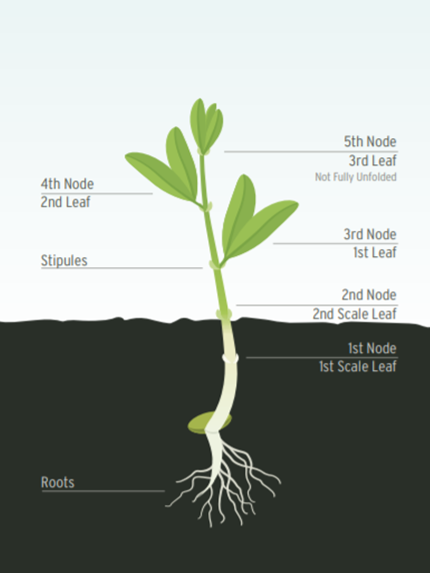

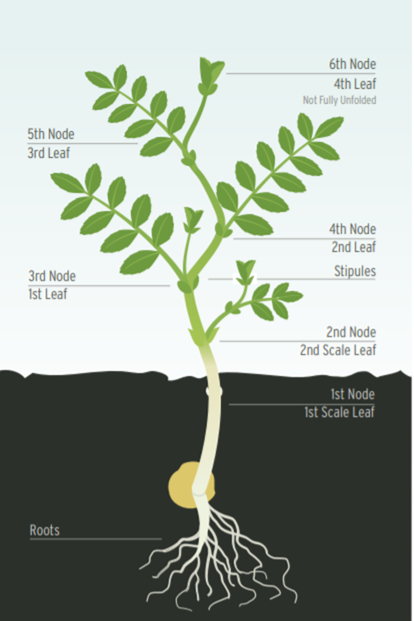
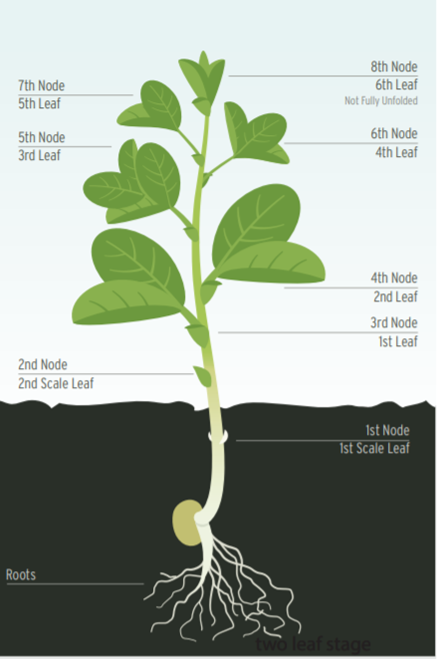
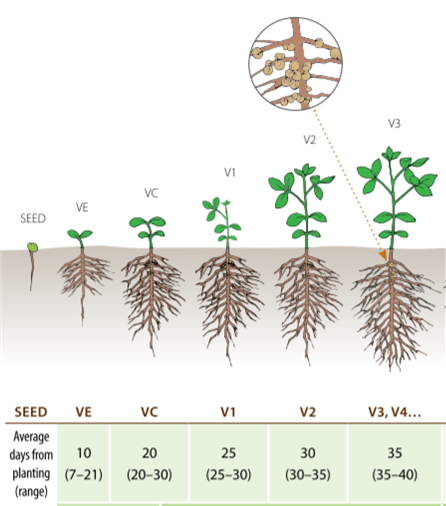
Source: Manitoba Pulse & Soybean Growers
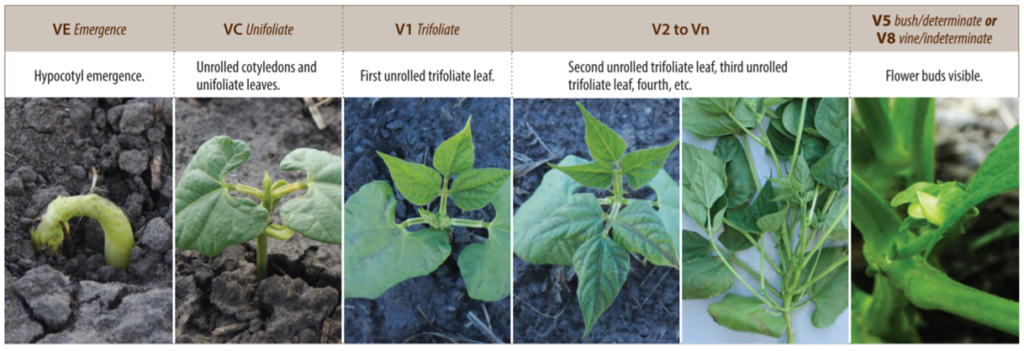
Source: Manitoba Pulse & Soybean Growers
